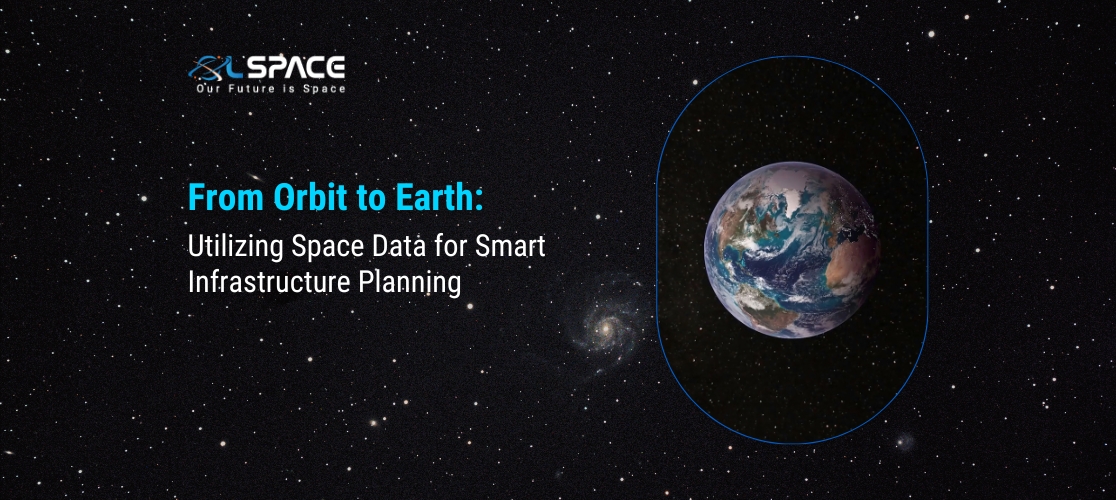07 May 2024
From Orbit to Earth: Utilizing Space Data for Smart Infrastructure Planning

Space-based technologies offer a wealth of data and insights that can revolutionise infrastructure planning and development on Earth. This article explores how satellite data and space technology are being leveraged to inform smart infrastructure planning, optimise resource allocation, and enhance the resilience and sustainability of built environments.
1. Remote Sensing for Earth Observation:
Satellites equipped with advanced sensors capture high-resolution imagery and data of the Earth’s surface, providing valuable insights into land use, terrain characteristics, and environmental conditions. Remote sensing technologies enable planners to assess infrastructure needs, identify suitable sites for development, and monitor changes over time.
2. Mapping and Geographic Information Systems (GIS):
Geographic Information Systems (GIS) integrate satellite imagery and spatial data to create detailed maps and visualisations of infrastructure networks, urban areas, and natural resources. GIS tools enable planners to analyse spatial relationships, optimise routing, and identify potential conflicts or constraints in infrastructure projects.
3. Environmental Monitoring and Impact Assessment:
Satellite data supports environmental monitoring and impact assessment for infrastructure projects, helping to identify sensitive ecosystems, wildlife habitats, and areas of conservation importance. By analysing satellite imagery, planners can assess the potential environmental impact of infrastructure development and implement mitigation measures to minimise harm.
4. Risk Assessment and Resilience Planning:
Space-based data facilitates risk assessment and resilience planning for infrastructure systems, particularly in areas prone to natural disasters and climate change impacts. Satellite imagery helps identify vulnerable infrastructure assets, assess exposure to hazards such as floods or landslides, and develop strategies to enhance resilience and preparedness.
5. Transportation and Traffic Management:
Satellite navigation systems, such as GPS and GNSS, support transportation and traffic management by providing accurate positioning and navigation capabilities. Satellite-based traffic monitoring systems track vehicle movements, optimise route planning, and improve traffic flow, reducing congestion and enhancing safety on road networks.
6. Infrastructure Monitoring and Asset Management:
Satellites equipped with synthetic aperture radar (SAR) and other sensors enable monitoring of critical infrastructure assets such as bridges, pipelines, and power lines. Remote sensing data allows for early detection of structural defects, deformation, and encroachment, facilitating proactive maintenance and asset management.
7. Water Resource Management:
Satellite imagery assists in water resource management by monitoring water availability, quality, and usage patterns. Remote sensing data helps identify sources of water stress, monitor changes in water bodies, and optimise water distribution systems, supporting sustainable management of water resources for infrastructure development.
8. Energy Infrastructure Planning:
Satellite data supports energy infrastructure planning by assessing potential sites for renewable energy projects, such as solar and wind farms. Remote sensing technologies provide insights into solar radiation, wind patterns, and terrain suitability, aiding in the selection and design of energy infrastructure installations.
Conclusion:
Space-based data and satellite technology offer unprecedented opportunities to inform smart infrastructure planning and development on Earth. By leveraging remote sensing, GIS, navigation systems, and other space-based tools, planners and policymakers can make informed decisions, optimize resource allocation, and build resilient and sustainable infrastructure systems for the future.
